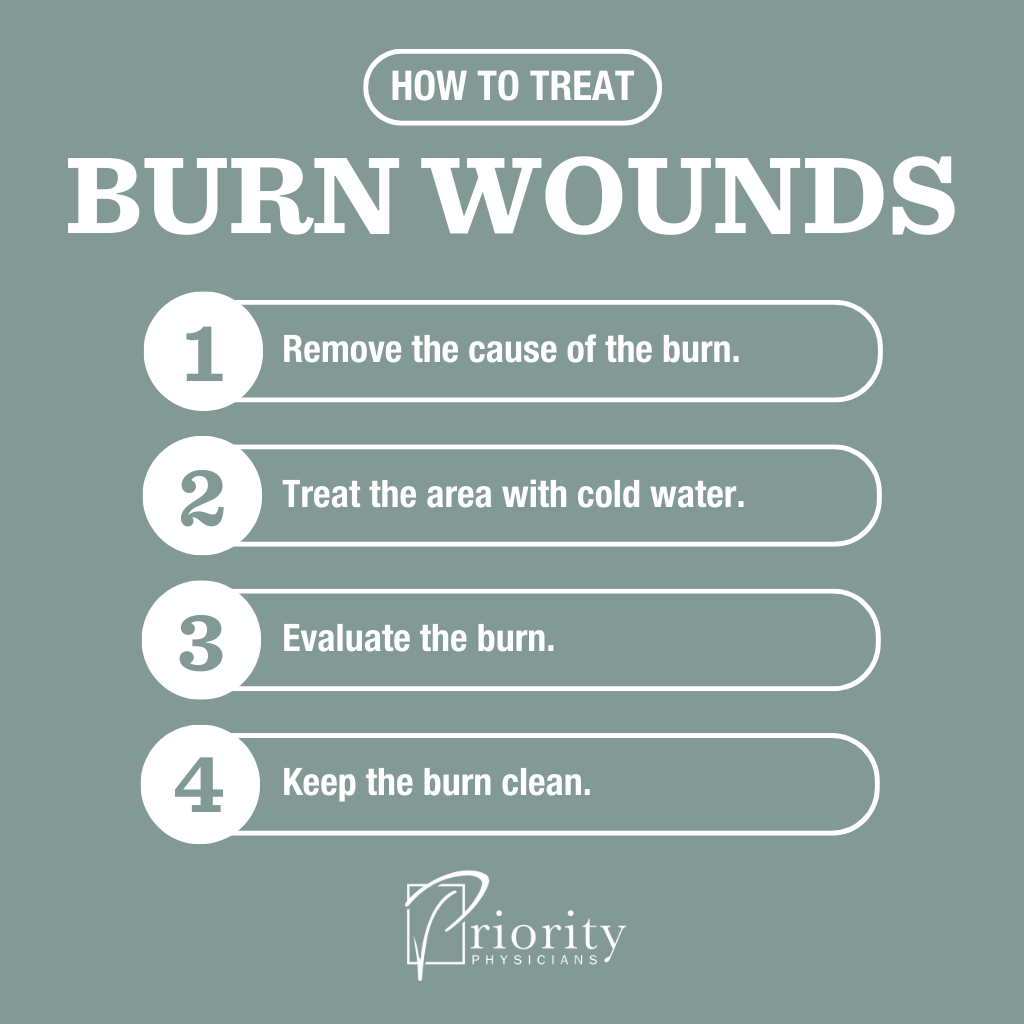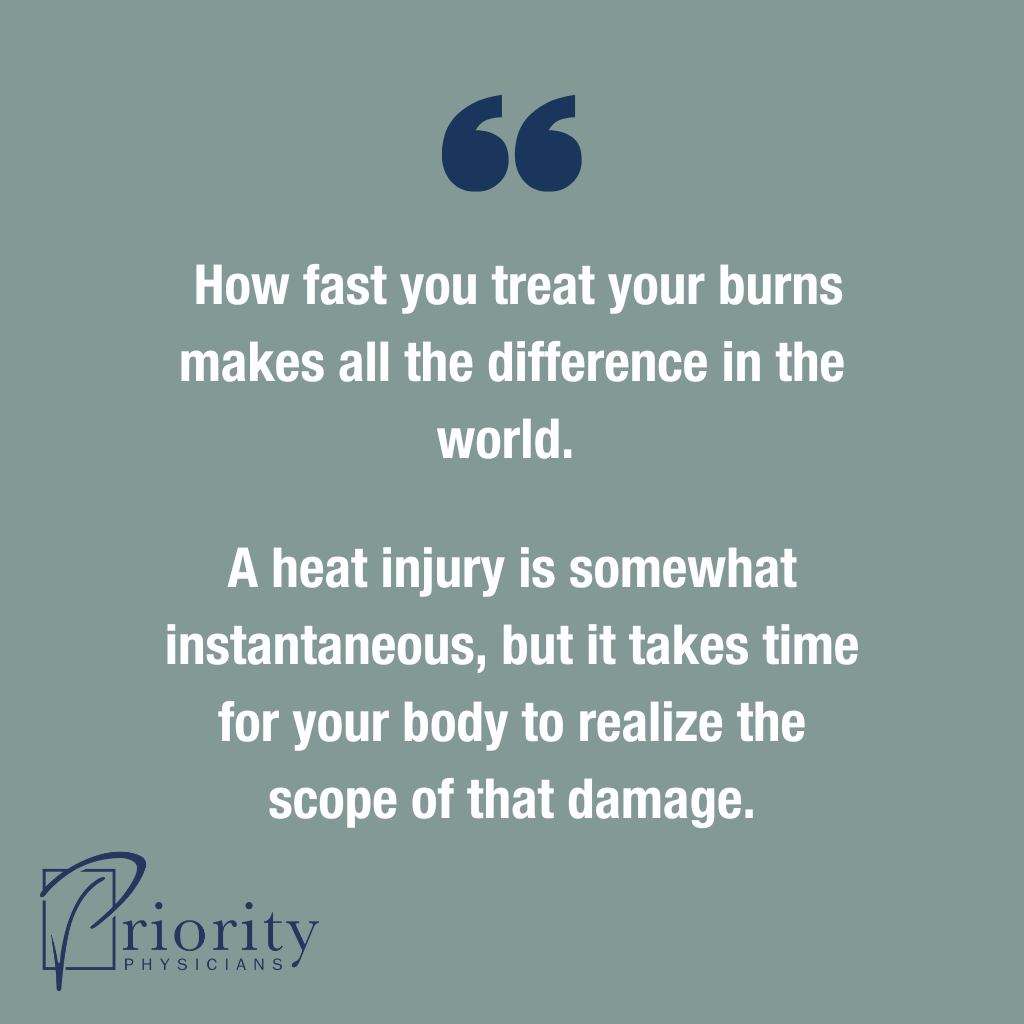We deal with things that are hot, flammable, or explosive all the time, and we usually don’t think twice about the risks.
Until we get burned, that is.
Maybe you’ve touched a hot pan or oven rack in the kitchen. Maybe you’ve been hurt by a candle, or a match that burned a little too far. Even scalding water in the shower or while doing dishes can lead to a thermal burn. These things are obvious hazards, but there are more severe burns you probably haven’t considered.
You may consider chemical burns uncommon, but they’re not as rare as you think. In fact, one of my patients just dealt with a freak accident. Watch what happened.
He was walking outside with batteries in his pocket — not doing anything abnormal — and those batteries exploded, burning his skin. He called me right away, and I told him what to do in real time. Luckily, he minimized the damage by getting most of the affected areas under cold water for 10 minutes. The burned areas he treated with water eventually healed the best, while the seemingly more minor areas that drew less attention initially were more difficult to treat later on.
The bottom line is that burns are common, and most people aren’t aware of all the potential risks present in daily life.
To help improve everyone’s readiness and ensure the best wound care for burns, I’m sharing several steps to take right away — because those first few moments are critical for successful healing.

Basic Wound Care for Burns
How fast you treat your burns makes all the difference in the world. A heat injury is somewhat instantaneous, but it takes time for your body to realize the scope of that damage. After a burn occurs, minimize the extent of that damage by treating the burn right away.
The following are important wound care steps to take as soon as you realize you’ve been burned:
1. Remove the cause of the burn.
Immediately remove the cause of the burn from the affected area. This should be a natural reflex, but sometimes the cause of a burn can travel with you — like grease or chemicals on your skin, or clothing that’s caught fire. In these cases, you need to remove the continued source of the burn as quickly as possible.
Other times, you may have to double check that nothing is continuing to cause damage without your knowledge. In the case of my battery patient, a chunk of the battery fell into his boots. With all the adrenaline he had pumping, he didn’t notice the pain in his ankle, and the burn went untreated for some time.
Finding and removing the battery sooner would have minimized some of the damage to his ankle.
2. Treat the area with cold water.
When it comes to burns, cold water is your best friend. After the burn is isolated, leave any affected areas under cold water for 10 minutes. This can feel like an eternity, but this time is essential in reducing the heat in the skin and stopping the burn’s progression.
3. Evaluate the burn.
After 10 minutes of treatment with cold water, assess the existing damage and make a plan for further treatment. This may mean contacting a doctor for additional assistance. If you’re traveling to a medical facility, keep a cool compress on the area while you travel, if possible.
4. Keep the burn clean.
Burns are prime locations for infections, which can be just as bad as the burns themselves. That’s why it’s important to keep burned clothes away from your body — they can melt onto your skin and escalate the situation.
When to See a Doctor for a Burn
How do you know when to see a doctor for a burn, or when to go to the hospital for a burn? In certain cases, you should seek professional treatment for a burn immediately.
Circumferential Burns
If a burn area stretches all the way around a body part — like your finger, wrist, or leg — you absolutely need to see a doctor for evaluation and treatment.
Large Burns
When it comes to wound care for burns, a rule of thumb is that you can estimate burn size by thinking of your palm as 1% of your body area, while your arm or leg is closer to 9%. Different percentages of burned skin require different levels of medical attention:
- ~10%: Seek medical attention
- ~20-25%: Medical attention and significant IV fluids required
- ~30% or more: Near fatal burn levels requiring emergency room treatment as quickly as possible
Next Steps
In addition to caring for the burn itself, you’ll also need to deal with other issues related to your injury. To give your body time to heal, you’ll need to address two variables:
- Infection: Your skin is your body’s main defense against infections. When you burn your skin, you’re literally burning away your number one infection defense mechanism. Keep the burn site clean to avoid complications.
- Pain management: Burn wounds are notoriously painful. Talk to your doctor about medication options for pain management.
Wound care for burns varies depending on the severity of the burn, that is, how many layers of skin the burn affects.
- First-degree burns, or superficial burns, only affect the outermost layer of skin.
- Second-degree burns, or partial thickness burns, damage deeper layers of the skin and may blister. It can be tempting to pop those blisters, but to ensure optimal healing, force yourself to leave those areas alone.
- Third-degree burns, or full-thickness burns, damage all three layers of skin and are the most severe types of burns.
If you’d like to speed up the healing process after you’ve consulted a doctor, the cream Silvadene has both antibacterial properties and can promote wound healing, which curbs infection risk and helps with pain management.
You’ll also want to minimize the frequency with which you change bandages. Burn wounds need to stay at body temperature for optimal healing, and every time you change a bandage, that area drops to room temperature without insulation, slowing the healing process. Once a burn wound is cleaned and bandaged, leave any dressings on.

Wound Care for Burns: Final Thoughts
If you find yourself questioning whether you should seek medical attention for a burn, seek medical attention. One advantage of our concierge medical model is that patients have a direct line to their doctor they can use at any time. My battery burn patient was able to call me immediately after his injury, and I told him what to do in real time as he texted me pictures of his wounds.
We saved him thousands of dollars in hospital bills because we were able to direct his care from the beginning. When the seconds matter, concierge medicine can make a world of difference.

